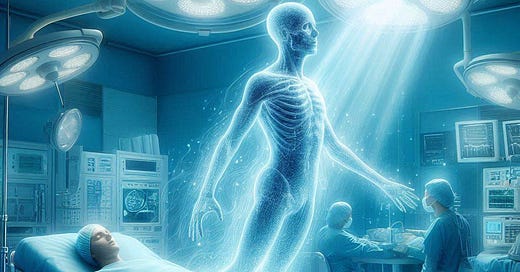Mechanics of Soul Transfers
You can cheat a lot of things, but you can’t cheat death… forever.
Ask the average person what they know about the soul, and they may begin to speak in terms of religion or the afterlife. However, should you ask them about the possibility of transferring your soul to another body, they will likely look at you like you’re insane.
Turns out, it’s possible. Just not for the average person.
There are two major pathways to accomplish such a thing: The magical/esoteric side, and the technological side. I won’t delve much into the latter aside from making the possibility known, but the former is still in use to the day.
First, let us begin with the basic reasoning: people die. People don’t want to die, so they seek ways to live forever. The human body does not live forever, therefore the human body must be replaced. Enter the soul transfer.
First, we must address a few questions:
Would memories transfer? Yes they would. Memories aren’t stored in the brain, despite popular belief to the contrary. This can be demonstrated by the numerous cases of an organ transplant recipient suddenly gaining the memories and the personality of the person they received the organ from. Contemplating the matter, it means that there are only two possibilities - organs such as the kidney are somehow able to retain and transfer memories, or memories are stored outside of the body.
As it turns out, the latter is true. We have a “brain”, which is responsible for physical functioning, maintaining physiological function, and our reflexive actions - the body’s autopilot. Then we have the “mind”, which actually performs higher cognitive functions. Intelligence is highly genetic in that it determines how well your brain interfaces with your mind - your brain is simply the Human Interface. More intelligent people are simply more in tune with their mind. It is possible to become more intelligent by becoming more in tune with your mind.
There will be a follow-up article to this detailing the role genetics play in intelligence and access to memories of “past lives” at some point.
With the understanding that actual cognition and memories are stored outside of the brain, we are now able to better comprehend the potential for a soul transfer, for the soul is you - your mind, your thoughts, your memories.
How would one go about transferring a soul? That’s where magic steps in. You see, the body works as an “anchor” of sorts, keeping your soul from departing into the afterlife. Occasionally, a soul will have some “unfinished business” and be capable of sticking around for a few years after their death, but this is not where the myth of the poltergeist comes from. Such activity is purely demonic in nature, as detached souls are strictly forbidden from interfering with the physical world upon pain of dissolution.
So what do you do, if you’re a disembodied soul and you don’t want to be dragged off to the afterlife just yet? Simple. You find a new host. In older times when this was accomplished via pure magic, you would often have an apprentice that was groomed for the task, and you would essentially “share” or take over their body, much in the same way a demon takes over a person. However, unless the deceased was an extraordinarily powerful magician, such a state of matters would generally revert to normalcy within a few months as the soul of the deceased would inevitably get rejected by the new “host”.
It is for this reason that such practices were usually ignored by the higher-ups - they would most often resolve themselves and the practitioner would be severely punished for attempting to escape death.
However, with the advent of modern technology, things have changed. It became possible to create “hosts” via modern programming methods and genetic engineering. One caveat that has to be considered is that the potential host has to be fairly genetically similar to the practitioner, so of courses, clones were initially tried. Clone bodies were unstable and unsuitable for use as an anchor because the initial lack of a soul during growth meant that the “nest” of the soul wasn’t properly developed, therefore the soul had no place to settle in and attach.
Something different had to be tried, and a particularly gruesome solution was settled upon - living donors. The soul would either be “removed”, or the mind of the person would be so shattered that they would be unable to form any form of defense against the possession of their body. The latter was preferred as it would allow the practitioner to siphon additional energy from the host, meaning that not only was the host possessed, they were also vampire food.
Initially this was done in the traditional ritualistic manner, but it was later discovered that technology could be utilized to make the process slightly less gruesome. Slightly.
What was the fallout from such practices being implemented? The role of the “reaper” was expanded, and they were assigned to “high-value targets” to ensure that they did not get a chance to complete a successful soul transfer upon time of death.
One such operation was likely performed around the time of Queen Elizabeth’s death. Be illuminated and watch this video with new eyes.
You can cheat a lot of things, but you can’t cheat death… forever.
Cheers!






Fascinating article. I have always rejected and been opposed to the idea of organ donation. I have never donated blood nor received any because I believe there is a form of entanglement that I do not want. Same goes for clothes, things and places. Memories and energy lingers and entanglement is bound to take place. About the same you talk about here just in other words.